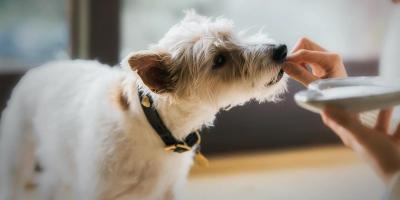
Separation anxiety happens when your puppy becomes greatly distressed every time you leave your home. Most puppies want to be close to their humans and may exhibit unwanted behaviour if they haven’t been taught how to be alone. The best approach is to gradually adjust your puppy to being by himself.
Remember, most puppies aren’t ready to be given completely unsupervised freedom in your home until they are a year-and-a-half or older. If you are planning to leave your puppy at home alone, make sure to either crate him or keep him in a safe and secured area in your home. Read on to learn more about puppy separation anxiety and how to help your puppy if he’s showing some common symptoms.
Signs of separation anxiety
If your puppy has separation anxiety, you may notice some behavioural changes. Watch for the following signs of separation anxiety:
- Improper urination or defecation in the house
- Excessive barking or howling
- Excessive chewing or other destructive behaviours in the home
How to help a puppy with separation anxiety
It can be hard to hear your puppy crying as you walk out the door. Read on for some tips on how to help ease your puppy’s separation anxiety.
Create a routine
Your puppy will benefit from a routine just as much you do. Leaving and returning at the same time every day will help your four-legged family member adjust to the experience of your leaving and reduce their separation anxiety.
Reward quiet behaviour
Reward quiet behaviour with calm praise and perhaps a treat such as a piece of kibble. Start leaving your puppy alone for just a few minutes at a time and then gradually increase it. Limit your attention when you are home so it isn’t such a shock when you leave. Also, reward your puppy with a piece of food and attention when he lies quietly away from you.
Make time for play and exercise
Schedule a designated time to play with your puppy every day. Taking him for a walk before you leave for the day is a calming strategy. After exercise, he will be ready for a nap, which creates the perfect moment for you to leave. If you work and don’t have time to walk your puppy, consider hiring a dog walker to give him a midday break. For ideas on games to play with your puppy, read our article on how to play with a puppy.
Turn on some tunes
No, you aren’t a “crazy pet parent” if you decide to leave the TV or radio on for your puppy when you leave the house. Playing music, leaving the TV on and even playing an audiobook can provide him with some engagement and distraction. In addition, the sound of another human voice can make him feel less alone.
Try stimulating puzzles or games
Puzzle feeders are a great way to reduce anxiety and keep your puppy mentally stimulated. Pour half of his recommended daily amount of food into the puzzle feeder each morning and then refill each evening. Your puppy will spend the day busy and engaged, which can ease feelings of anxiety.
Stay calm and confident
You’re the pack leader so your puppy will follow your lead. If you prolong goodbyes, you’re more likely to spur those feelings of separation anxiety in your puppy. Instead, keep your goodbyes short. If you can’t resist a longer goodbye, say goodbye with lots of petting and praise about 10 to 20 minutes before you leave. Then, you can leave without feeling guilty!
If you have to leave suddenly and don’t have time for a walk or to create a game for your puppy to play while you’re away, try giving him a favourite toy to keep him stimulated. By following the above tips, you can ease your puppy’s separation anxiety symptoms and make him feel more comfortable being home alone.
Signs of Serious Separation Anxiety
Most dogs, especially puppies, may whine or cry a little when left alone. True separation anxiety is defined as destructive or disruptive behaviour, including tearing up the room, constant barking and whining or housetraining mistakes every time you leave. This often starts immediately after you leave. In such cases, you may want to consult a qualified dog trainer or behaviour professional.
Related articles



